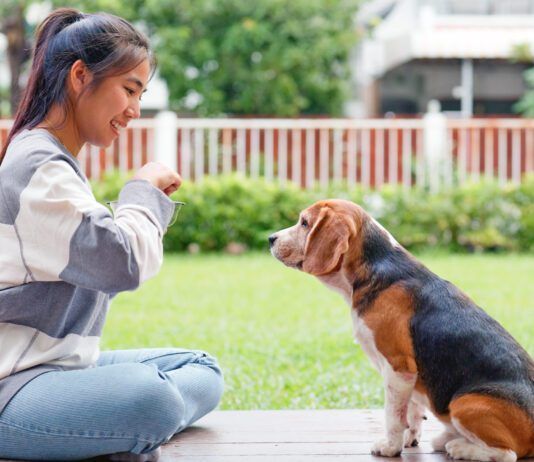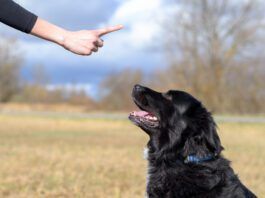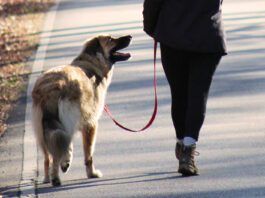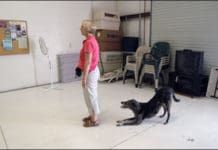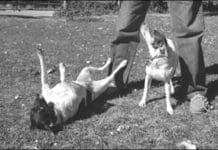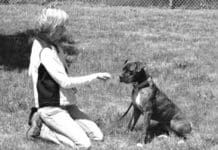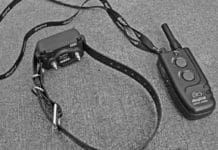Training Your Dog with Rewarding Treats and Praise
Why should training be fun for the dog? Briefest possible answer? “It’s the law.” How animals learn is the most-studied phenomenon in the history of psychology and is up there with gravity in terms of its lawfulness. One of the big ticket principles is that anything one tries to teach a new learner (such as a beginner dog) will get stronger in direct proportion to how many times it is rewarded. And (of perhaps even greater interest) every time the new learner does the behavior and is not rewarded (as in, say, “drilling” the same behavior over and over again) the behavior gets weaker. (Not just “doesn’t get stronger” – gets weaker.) In other words, it’s better to do nothing at all than to drill without rewards.
Keeping Dog Training Fun and Playful
Dogs are one of the rare species of animals who play throughout their lifetimes; perhaps it's one of the reasons we have such strong bonds with dogs, because we too play as grown ups. Humans and canines appear to be what scientists call neotenous": as adults
Positive Dog Training Styles
you'll find that your training really slows down . . . and it's easy to blame the dog for this
Increase Your Dog’s Reliability
Behavior professionals often define “reliable” as responding appropriately to the cue at least 80 percent of the time. That means your dog sits at least 8 out of 10 times when you ask him to. It’s unreasonable to expect 100 percent reliability from your dog. It takes commitment to your training program to achieve reliability under a wide variety of conditions. Let’s explore some of the elements that make for true reliability.
Canine Stimulus Control Through Positive Dog Training
Canine Charlie willingly sits on cue, but when clicks and treats don't come fast enough, he starts trying other dog behaviors in his repertoire - with rapid-fire offerings of shake, speak, down, and even a roll-over finding its way into the mix. He gets so excited about the dog training game that sometimes he doesn't even bother to sit first when asked, but drops right into the down - his favorite position. Charlie, an eager worker who loves positive reinforcement, has learned a lot of different behaviors and is anticipating his human's cues for all his favorite tricks. He clearly doesn't have his behaviors under stimulus control.
Dog Training Using Positive Techniques
and who are appropriately reinforced for the ""right"" behavior
Shouts and Whispers
You presented (“Don’t Whisper,” December 2006) some of the same observations I have made in viewing “The Dog Whisperer,” but I believe that you failed to give him credit for two key points.
Positive Methods for Obedience Training
How to teach your dog to look to you (literally!) for direction. Look is a combination behavior. It is more than the “Leave it” or “Off.” It is more than the ever-popular “watch me.” It involves the dog breaking eye contact with the arousing object, person, or animal (whatever triggers the dog’s manic behavior); turning his head away from that trigger; making eye contact with you; and holding that eye contact until you give a release signal.
The Canine Shock Collar Debate
The chasm between those who abhor the electronic/shock collars as an abusive dog training tool and those who support and promote it as an exceptionally effective and humane training tool is so huge it will probably never be bridged. In more moderate positions in the middle of that chasm are those who believe that the collar can be an effective training tool for very limited circumstances in the hands of skilled professionals, and those who prefer not to use them but feel compelled to educate clients who insist on using them on how to use them properly.
Dog Training Using Rewards
What could be more convenient? Many trainers are recommending Skippy’s “Squeez’ It” as a convenient training tool because it can be used to dispense a peanut butter treat right into the mouth of a dog who deserves a reward. The dog loves it, and his handler’s hands stay clean and dry. No wonder this product is getting rave reviews from trainers.
Why Punishment-Based Dog Training Doesn’t Work
By definition, punishment is something that will decrease the probability of the occurrence of a certain behavior. Generally, this punishment involves something that is sufficiently startling or aversive so as to thwart the “problem” behavior. If the dog has benefitted from the behavior in the past, it will take even more startling or aversive punishment to override his expectation of getting that reward again. Frequently, a punished dog stops attending to you; you become something to be avoided.
Reinforcing Our Beliefs of Positive Dog Training
Regular readers of WDJ are aware that we advocate a positive approach to dog training, that is, using only dog-friendly methods to teach our canine companions how we want them to behave in our homes, our cars, our arms – our world. We eschew methods that hurt or frighten dogs, even in the name of the supposed “greater good.” We think there are plenty of dog-related examples to justify this stance, but occasionally, we also find it useful to look beyond the dog-training profession for reinforcement for our beliefs.


